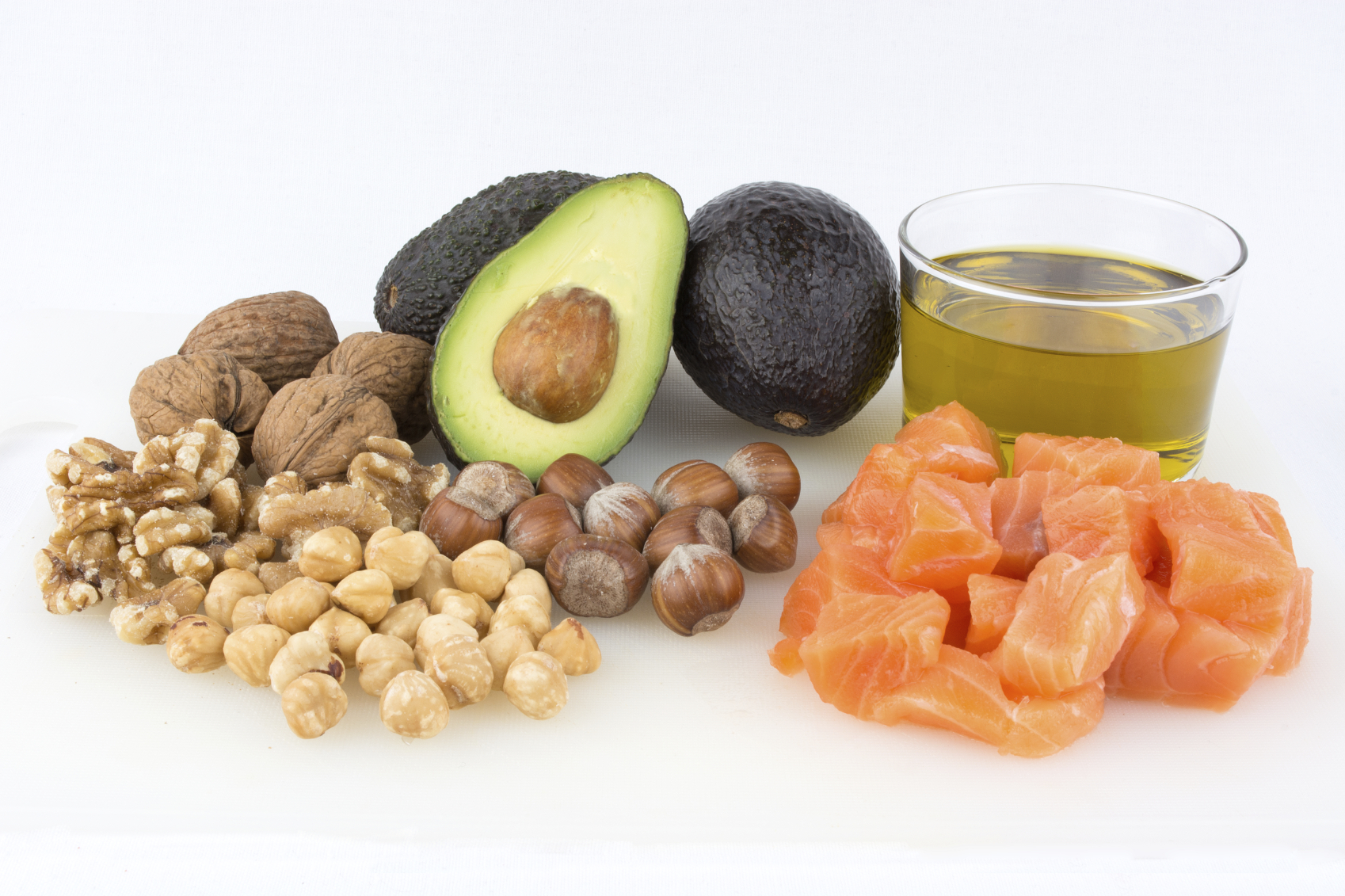 The term “game of inches” is often applied to football, but it is just as apt for a healthy diet. Small changes over time typically result in a healthier lifestyle than large, dramatic changes that only last until willpower expires. One of the ways to conquer inches in healthy eating is to make better choices in the fats we eat.
The term “game of inches” is often applied to football, but it is just as apt for a healthy diet. Small changes over time typically result in a healthier lifestyle than large, dramatic changes that only last until willpower expires. One of the ways to conquer inches in healthy eating is to make better choices in the fats we eat.
Fats in the dietary world have a variety of proportions of saturated and unsaturated fatty acids. Based on the specific fatty acids inside the fat, this affects how the body reacts to them. The fats found in all foods contain both saturated and unsaturated fatty acids, but in foods like fish, only about a quarter of the fat is saturated, the remainder being the more healthful, unsaturated fat. Typically, fats are categorized into “bad” (saturated) and “good” (unsaturated).
Let’s Look at the “Bad” (Saturated Fats) First:
Saturated Fats or Trans Fatty Acids: partially hydrogenated oils, butter, lard, meat, lunchmeat, poultry, non-skim dairy products; coconut oil, palm oil. Trans fatty acids are typically found in commercial, heavily processed products like baked items or breads. They are being phased out in the U.S.
Now for the “Good” (Unsaturated) Guys
Polyunsaturated Fats: nuts, seeds, sesame oil, corn oil, fish oils, soybean oil, safflower oil
Monosaturated Fatty Acids: olive oil, canola oil, avocado, peanut butter, almond oil
The general rule of thumb is that saturated fats raise the “bad” cholesterol in our blood—LDL cholesterol. This is true, as far as rule of thumb goes. According to the University of California, Berkley’s Wellness webpage, since we eat saturated fats with other foods, and because not all saturated fats are created equal, eating them can have varied effects. The saturated fats found in steak are very different from the saturated fats found in chocolate, for example. Those in chocolate, while still saturated, have a more neutral effect on LDL.
Coconut oil does contain saturated fat but since the main fatty acid is lauric acid, as in chocolate and dairy products, some studies show that lauric acid raises HDL (good cholesterol) proportionately more than LDL.
Polyunsaturated Omega-3 fatty acids from fish, flaxseed and walnuts are potentially very effective at reducing cardiovascular disease. For maximum benefit, get your Omega-3’s from foods, not a pill. Balancing both your Omega-3’s and your Omega-6’s is important.
More important than reading a science headline and heeding one or two pieces of information, though, is to examine your eating habits and your food choices. Work on finding what is healthy for your body. What works for you may not have the same effect on your friend. This is the concept of bio-individuality. Investigate some of those healthy trending diets and discover the combination that works best for your body. Start with eating more whole foods and less processed foods, as well as striving for balance in what you eat. There is a place for most things in our diets like whole fat foods or carbohydrates.
Bottom Line
Stick to healthy, whole foods and resist the urge to focus on only one part of your eating plan. Not interested in going vegetarian? Choose one meal a week for a vegetarian delight. Use fat sparingly—exchange some of your whole fat butter or margarine with a healthy liquid oil like olive oil. If you eat dairy products, skim or low-fat are suggested. High-fat foods, processed foods, and desserts should be minimized. Find substitutes for desserts like yoghurt or fruit. Changing eating habits happens over time, and making small, considered changes is better than jumping into a fad diet that may have a big short term effect but end up having little long term effect.





